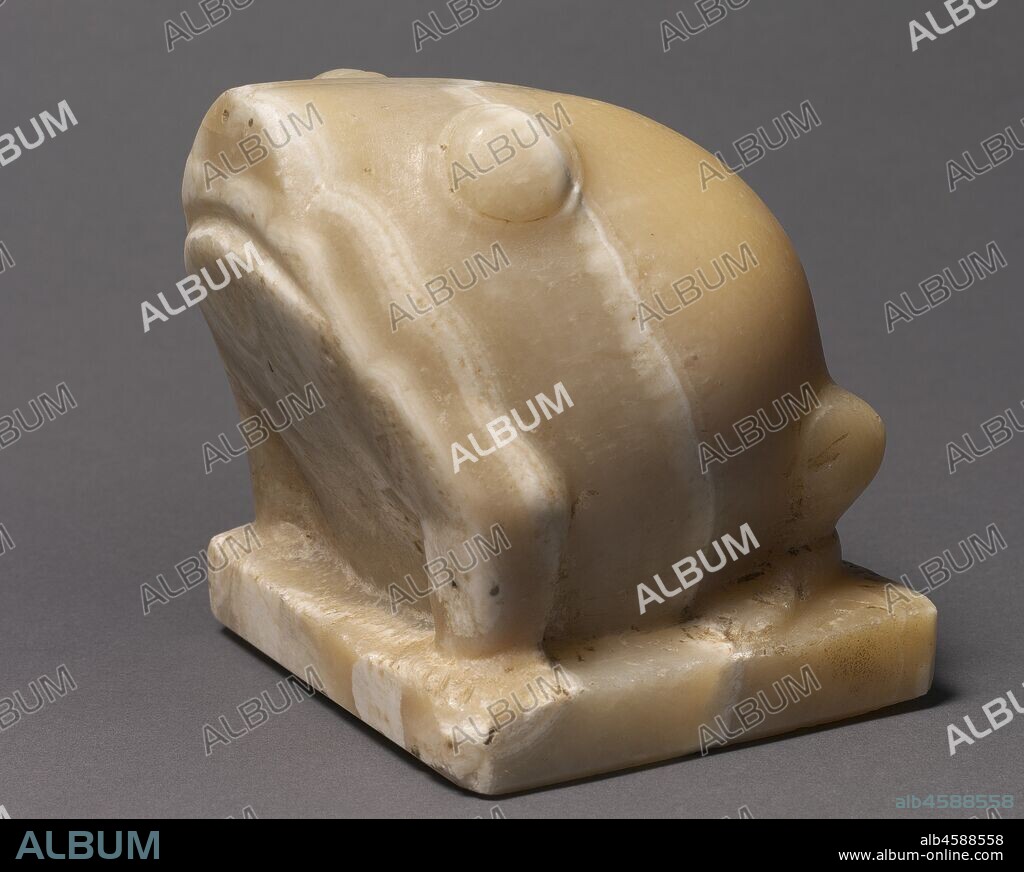alb4588558
Statue of Heqat, the Frog Goddess, c. 2950 BC. Creator: Unknown.

|
Ajouter à une autre Lightbox |
|
Ajouter à une autre Lightbox |



Avez-vous déjà un compte? S'identifier
Vous n'avez pas de compte ? S'inscrire
Acheter cette image.
Sélectionnez l'usage:

Titre:
Statue of Heqat, the Frog Goddess, c. 2950 BC. Creator: Unknown.
Légende:
Voir la traduction automatique
Statue of Heqat, the Frog Goddess, c. 2950 BC. During the Predynastic period statues of animals are much more common than those of humans. This statue of a frog stands at the beginning of a great tradition of animal sculpture in Egyptian art. The sculptor has shown great sensitivity to the natural banding of the stone, using it to enhance the roundness of the animal's form. Small frogs, mostly of faience, are among the most common votive offerings deposited at early temple sites. The frog's exact religious significance in the Predynastic period is unknown, but in later times it was most often identified with Heqat, the goddess who assisted at childbirth.
Crédit:
Album / Heritage Art/Heritage Images
Autorisations:
Taille de l'image:
3890 x 3112 px | 34.6 MB
Taille d'impression:
32.9 x 26.3 cm | 13.0 x 10.4 in (300 dpi)
 Pinterest
Pinterest Twitter
Twitter Facebook
Facebook Copier le lien
Copier le lien Email
Email
